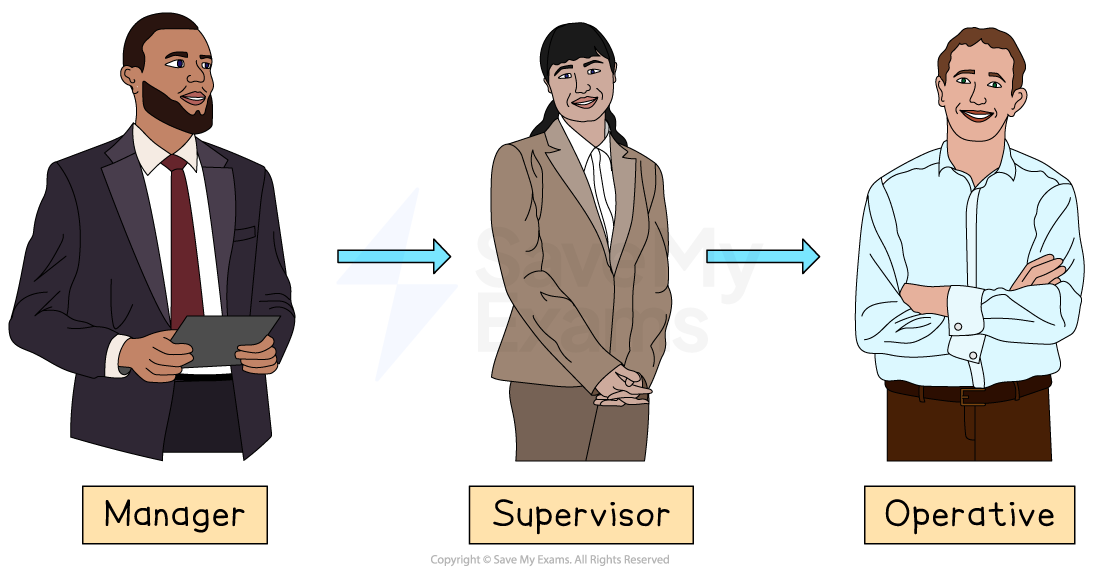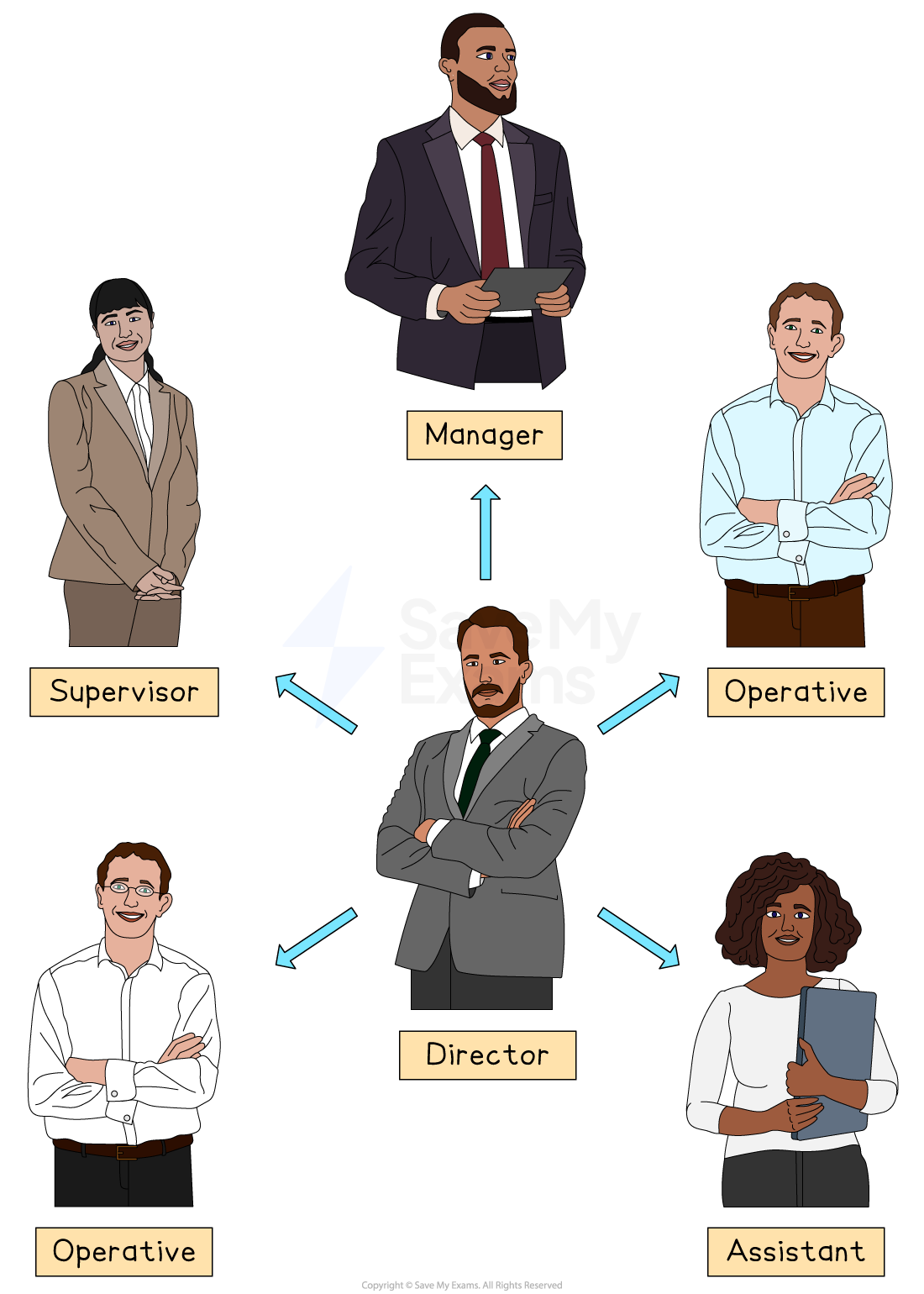Channels of Communication (Cambridge (CIE) A Level Business): Revision Note
Exam code: 9609
Formal communication
Formal communication is the planned way a business shares information
It is written down or recorded, so there is proof of what was communicated
Formal communication happens differently depending on the type of communication network
A communication network refers to the patterns or structures through which information flows within an organisation — in other words, who communicates with whom and how
Communication networks
1. Chain communication

The message travels step-by-step up or down the hierarchy, following the chain of command
Chain communication suits tall, rule-bound organisations, such as the armed forces
There is clear authority and accountability
It is easy to trace who said what
However, it is slow, as passing the message through each layer adds time
Details can be distorted as they pass along
Lower levels may feel left out of decisions
2. Wheel communication

One central leader receives information from, and sends instructions to, every other member
This approach is suitable when rapid decisions are needed, such as in emergencies
The leader has the full picture, so messages stay consistent
However, the message sender can suffer from information overload, as there is over-dependence on one person
As there is little sharing between outer members, important ideas may be missed
3. Circle communication

People of equal rank speak or pass the message in turn around the group
This approach builds team spirit and trust
Everyone is heard , so it is good for brainstorming and problem-solving
However, it may be slow to reach a decision and there is no single leader to break deadlocks
The message may have to travel a long way to reach the right person
Benefits of formal communication
Benefit | Explanation | Example |
|---|---|---|
Clear instructions |
|
|
A record is kept |
|
|
Fairness |
|
|
Legal protection |
|
|
One- and two-way communication
One-way communication is where information moves from sender to receiver only
The listener or reader does not reply
It is typically used for announcements and important instructions, e.g., fire alarms, where speed or clarity matters more than feedback
It delivers a single, consistent message to many people quickly, with no debate to slow it down
However, the receiver cannot ask questions, so misunderstandings can occur
Two-way communication is where a message is sent and then replied to
This creates a feedback loop between sender and receiver
It is typically used for team meetings, customer-service chats and appraisal interviews, and situations where understanding and agreement are vital
Feedback confirms the message has been understood and lets both sides share ideas, which can improve decisions and morale
However, it takes more time and, if poorly managed, may lead to arguments or information overload
Vertical and horizontal communication
Vertical communication involves information moving up and down the hierarchy, between managers and the levels above or below them
It is typically used to communicate targets from directors to supervisors (downward) or progress reports from the shop floor to management (upward)
It keeps the chain of command clear and ensures decisions and feedback reach the right level
However, it can be slow, and messages may get distorted or filtered as they pass through several layers
Horizontal communication is where messages are shared between people on the same organisational level, often across departments
E.g. the marketing manager may communicate with the finance manager about a promotional campaign budget
It can speed up problem-solving and teamwork by letting peers share information directly
However, if not copied upward, senior managers may be unaware of agreements, causing confusion later

Unlock more, it's free!
Did this page help you?